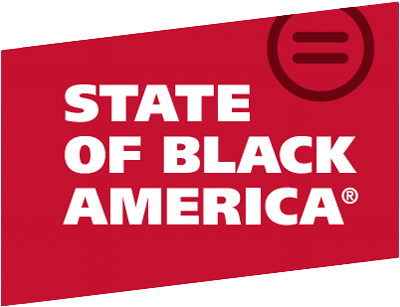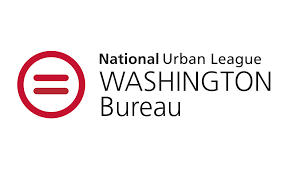The best way to rise from poverty into the middle class is to acquire a home. But this has proven to be extremely challenging since the Great Recession of 2008, even for people with good credit and incomes to cover loan payments. For African Americans, home ownership is at a 40-year low.
Historically, mortgage loans for home purchases have contributed immensely to wealth-building for African Americans. Those days, though, are vanishing, and little progress is being made in the fight to protect all Americans from risk and discrimination.
In this piece, I focus on several new patterns of discrimination and summarize reforms needed to help people of color obtain loans to buy homes and build small businesses.
Homeownership
For decades, three agencies backed by the federal government—Fannie Mae, Freddie Mac and the Federal Housing Administration—helped working class whites and people of color become homeowners.
These agencies are critically important for African Americans working towards home ownership, but all three remain in limbo under the Trump Administration. Without a clear direction, or the ability to do what they have done for decades, these agencies can no longer ensure that average Americans working their way up the economic ladder are able to build equity and wealth through home ownership.
Worse, the U.S. Senate, led by Sen. Mitch McConnell, passed S. 2155, a bill that makes banks less accountable and transparent. President Trump has also dramatically weakened the Consumer Financial Protection Bureau (CFPB), the only public agency exclusively designed to protect average Americans from financial abuse.
The Dodd-Frank finance and banking rules passed by Congress after the 2008 financial crisis required all banks and credit unions to report detailed racial, ethnic and gender data that could identify differences in how banks treated different loan applicants. This year, the Senate passed a bill that exempts 85% of banks and credit unions from reporting this data. In other words, they rolled back the clock and removed a critical tool for regulators, journalists and consumer advocacy groups like the National Community Reinvestment Coalition (NCRC) that monitor whether or not banks discriminate against African Americans, Hispanics, women and others.
Unfortunately, housing discrimination remains an ongoing challenge in our country. A recent report from the Center for Investigative Reporting found banks discriminated against minorities in 61 U.S. cities. The Center gathered this information from mortgage data submitted by banks to the federal government.
But this pattern of discrimination by banks doesn’t make much sense. People of color will soon make up the majority of families in the U.S. A Harvard Joint Center for Housing report found that by 2025, 75 percent of new household formations will be people of color. That number jumps to about 85 percent by 2030. If banks don’t meet their needs, alternative lenders with higher interest rates will jump into the game and lend to people of color. Traditional banks will be left behind and people of color will have to pay more for their loans.
The Community Reinvestment Act (CRA), passed by Congress in 1977, requires banks to help meet the credit needs of the communities they serve, including low- and moderate-income neighborhoods.
NCRC has long called for strengthening the CRA to ensure that banks don’t engage in redlining, when a bank declines a loan application based on a household’s zip code, rather than the borrower’s credit-worthiness. Yet recent analysis by NCRC and the Center for Investigative Reporting found that discriminatory practices in lending remain a potent obstacle for people of color.
Without the Dodd-Frank data reporting requirements, working-class people will lose. Deterring discrimination will be harder as well as the accumulation of wealth by African Americans.
Small Business Lending
Discrimination is not limited to mortage lending. People of color also have less access to small business loans, the biggest job creating generator in African-American communities.
Banks and lenders covered by CRA reported more than seven million business loans of less than $1 million each. That amounted to almost $258 billion in lending. However, only 33% of those loans went to small businesses reporting less than $1 million a year in revenue. In low-income neighborhoods, lending skews in favor of larger loans.
Recognizing this problem, the Dodd-Frank bill required the CFPB to establish a mechanism for banks to report performance in this area. Under President Trump, the Administration chose to cancel efforts to require banks to report this data.
Bank Branch Access
Yet another barrier to building wealth in communities of color is a lack of access to traditional financial institutions. An NCRC report titled Banking Deserts in America found that many banks have closed branches in areas with growing populations. Growing populations generally translate into growing deposits. So why close the branches
Our study found that 9,666 of 95,018 branches were lost between 2008 and 2017. Several metro areas lost 15 to 25 percent of their banks. Losses were especially acute in Baltimore, Chicago, Philadelphia, Las Vegas and Detroit.
In addition, the report found that rural America is being left behind. Huge swaths of the country have fewer and fewer bank branches and growing banking deserts with no banks within 10 miles of populated areas.
Because of their already diminished market access, rural areas are especially vulnerable to banking deserts and banking deserts disproportionately impacted minorities, with 25 percent of all rural closures in majority-minority census tracts
Discrimination Perserveres
Last year, NCRC conducted mystery shopper tests. Our tests found that bankers were three times more likely to offer follow-up appointments to white borrowers seeking small business loans than better-qualified Black borrowers. It’s painful to see signs of discrimination linger—and on such a scale—a half-century after the establishment of Civil Rights-era laws aimed to eradicate discrimination in all spheres of the economy and our society. It’s also painful to see both Republicans and Democrats join forces in a rare show of bipartisanship to support efforts that hide this true and troubling story of discrimination from the public.
These kinds of discrimination are stunting economic growth in African American neighborhoods and blocking small business owners from loans that would expand their businesses and create more jobs. Denying the tools of economic self-reliance and wealth to a significant portion of our population robs communities—and our nation. NCRC hopes the White House and Congress will follow through on campaign promises to help African Americans by continuing to require banks to report data about their home purchase loans.



